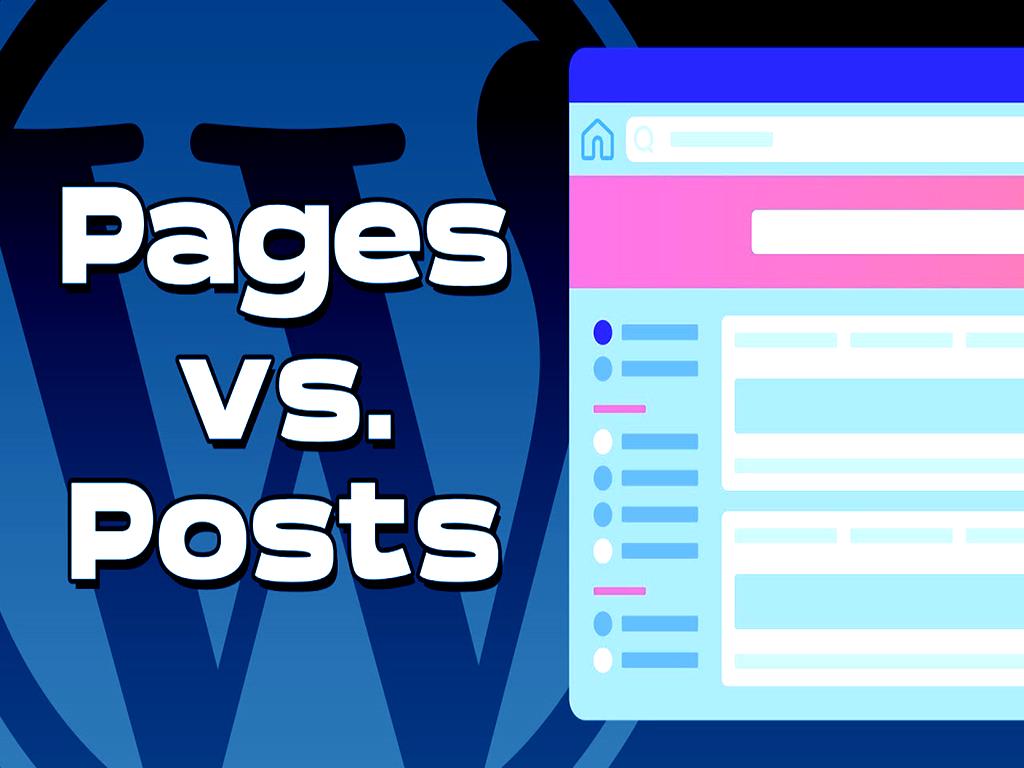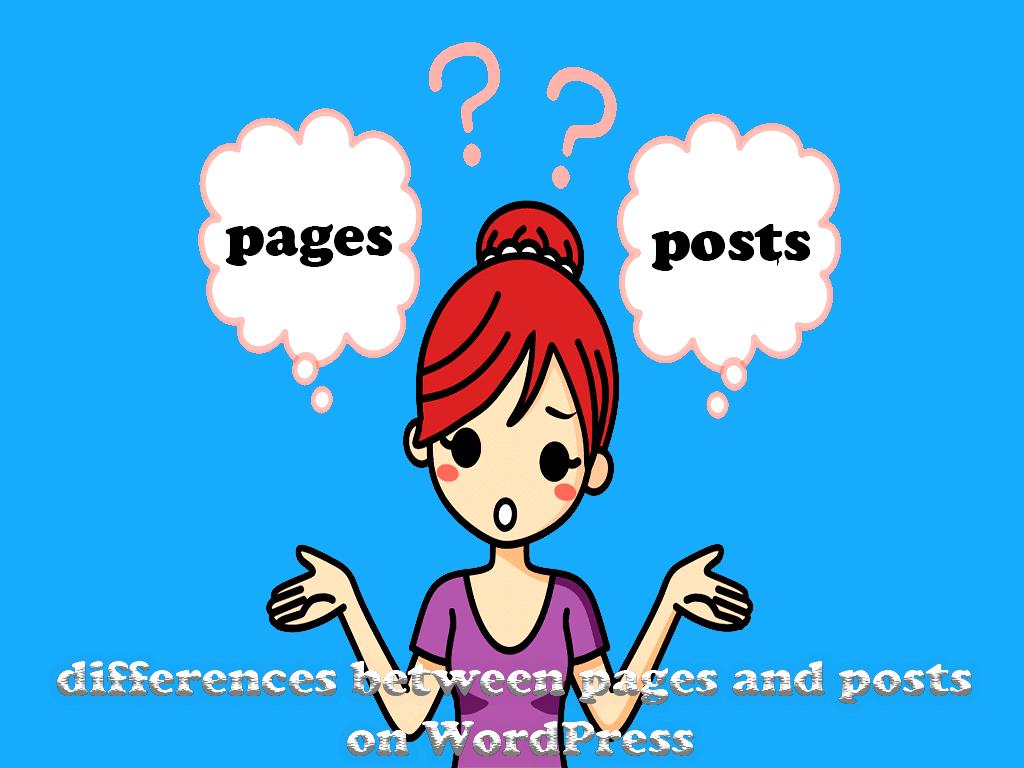A few differences between pages and posts on WordPress
WordPress is a site content management system through which you can design a variety of sites. WordPress is the most widely used content management system in the world, which has a large number of plugins, each of which has different features and provides different functions to users.
After installing WordPress on the host, it"s time to add content to it. Usually one of the most common questions all users may have, is that, should I use pages for creating content or use posts instead? And what is the difference between these two?
Usually other questions such as when should I use posts? When should I use pages? May also come to the user’s mind.

What are post on WordPress?
Posts are content from WordPress that has a release date and this date can be seen in the posts. Also, the important point about posts is that all posts on WordPress are listed in order of time of its publication from new to the old one on WordPress, and the author"s name is also mentioned in WordPress posts .
It should be noted that all old posts are archived based on the time of their publication, you can also categorize all this type of content.
You are also able to publish posts on social networks such as Facebook, Instagram , LinkedIn and etc., through existing plugins so that more users can see your posts. In the following, you will learn how to add posts to WordPress content.
How to add a post on WordPress?
Now that you are familiar with the general concept of the post, and we have explained its features to you, now you may be wondering how can I add the post on WordPress , which we will answer in the following. To add posts as well as editing them you have to go to the dashboard on WordPress and then click on the post you want to add.
On WordPress, users and visitors can get the latest post updates via Really Simple Syndication, which stands for RSS. In fact, RSS is a kind of web feed that allows visitors to receive regular updates from their favorite site.
It should be noted that via RSS feed, emails can be sent to users simultaneously, through which you can use them to show the latest updates made on your site and other news. In WordPress posts, it is possible to make comments, which may be positive or negative, and also users can send their comments on a specific topic.
Of course, sometimes you do not want users to be able to post comments on a topic and post, so you can easily go to settings, and turn off the comments, especially in relation to older posts. Now that you are familiar with the way to add posts on WordPress, it is better to get acquainted with WordPress pages , and then we will mention the difference between these two.
What are Pages on WordPress?
Pages on WordPress are used to record static content that does not need to be changed. For example, pages related to site history, basic site information and etc., are fixed and do not need to be constantly updated, however, if your contact information or location changes, this is possible for you to edit these sections and update your information.
Unlike posts where the release date was recorded, no dates are mentioned on the pages, and they are not seen in the RSS feed.
How to add and manage a page on WordPress:
To manage and also add pages on WordPress, you have to refer to the WordPress dashboard like adding a post, with the difference that for adding a post, you should click on the post after entering the WordPress dashboard, but to add pages, you have to go to WordPress and after entering click on the page’s option.
In addition to the fact that the pages do not have a publication date, it should be noted that the publish button on social networks is not also seen on the pages and users can not share the pages, although you may not need to share the information on the pages.
Another point is that the pages do not have a section for posting user comments by default, but you can go to the settings section and enable the ability for users to submit comments.
In WordPress pages, it is possible to create a display template that includes the page and subpage, another feature of pages on WordPress is that these pages have themes by default that you can choose the one you like. Now it"s time to express the difference between the post pages.
The Differences between pages and posts on WordPress:
In the description section of the pages on WordPress, we have mentioned some of the differences between these two, but in this section, we will compare them in more detail.
- WordPress posts have a time and date of publication, but WordPress pages do not have it, and there is no time limit in this type of content.
- Posts can be viewed in the Really Simple Syndication feed which gives information about the latest updates, but pages cannot be viewed in this feed.
- Posts can be published on social networks, but there is no opportunity to publish pages on social networks, and of course there is no need to publish this type of information.
- The author"s name is placed in the posts, while there is no author name in the pages.
- The way of organizing posts and pages on WordPress is different, and it is in such a way that in organizing posts you can divide them into different and specific categories based on the time of publication, but in pages it is hierarchical and is divided into subcategories.
We have briefly stated the differences between the post and the page, but it should be noted that despite the differences between these two, there are some similarities that we will discuss below.
Similarity of pages and posts on WordPress:
- The most important similarity between pages and posts on WordPress is that both are used to publish content, and any type of content can be published through each item.
- According to the features that WordPress provides for you as a site designer , you can use the pages and posts to produce the site and get help from each one differently according to the situation.
Which one is better for website optimization:
- One of the factors that has a huge impact on a website ranking is the constant updating of content, which posts are constantly updated by site owners due to containing the date of publication and updating ability, while pages may never be edited.
- Posting comments in the posts will cause more users to interact with each other and also with the site owners, which will allow the user to get a positive user experience.
- Another factor that is very important in SEO of a site is the use of social networks, which in posts due to having a button to share it on social networks, this site optimization is better and users can share it on social networks such as Facebook , Instagram, etc., if they find a post interesting which has a positive effect on improving the website ranking.
In general, posts can have a positive effect on the SEO of a website, and depending on the type of content you want to produce, you must choose the one you prefer better.
Tips related to post and page:
- While producing content, you can use posts and pages as much as you want, and there are no limits for number of uses.
- If you want to turn a post into a page after a while, or vice versa, you can get help from WordPress plugins and make the necessary changes.

Last word:
In general, in order to manage the site better and use the tabs and posts correctly, it is necessary to be familiar with the differences between them, so that you can use each in the right direction. We tried our best in this article to mention the posts and pages and also express the differences between them. Now you can decide which one to choose by being aware of their pros and cons, and depending on the type of content, so that you can achieve success with the right choice.
Source: https://www.dotnek.com/Blog/Web/a-few-differences-between-pages-and-posts-on
Youtube:https://youtu.be/HmR_L-uaDkg


